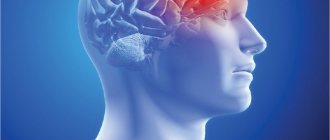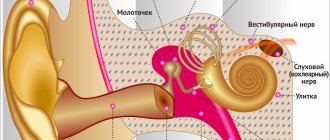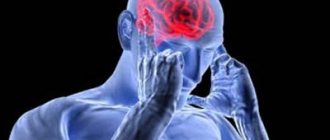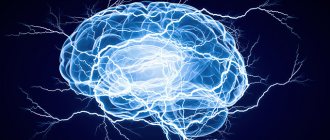Acute myelitis is an inflammatory process that occurs in the brain cells located in the ridge. The name of the pathology comes from the Greek word, translated meaning “spinal cord”. The severity of symptoms directly depends on the degree of spread and the age of the patient. Depending on its location, the disease often causes a disruption in the connection between the brain and the body, dysfunction of internal organs and other severe pathologies. Therefore, early diagnosis is essential to increase the chances of successful treatment.
Etiology
In some cases, the cause of myelitis cannot be identified. However, the disease has a classification based on etiological data:
- Infectious – occurs in 50% of cases. There are primary and secondary flow options. In the first case, the pathology predominantly occurs against the background of HIV infection, syphilis, CMV, enteroviruses, and herpes simplex. The main cause of secondary myelitis is osteomyelitis of the spinal column.
- Intoxication – inflammation develops during poisoning with poisons (acute intoxication with certain medications and psychotropics or prolonged exposure to harmful substances on the body, most often affecting patients with unfavorable working conditions).
- Traumatic - in case of spinal injuries, the main cause of the development of inflammatory processes is damage to the spinal column and disruption of its functions or the penetration of infection through an open wound surface.
Other causes include autoimmune pathologies affecting the myelin sheath of nerve fibers and immunopathological inflammation of the vascular walls. Sometimes myelitis occurs as a result of metastasis during cancer processes.
Pathogenesis
The development of the disease begins with swelling of the spinal cord, which leads to circulatory disorders and blood clots. The processes contribute to the occurrence of even greater swelling. Thus a vicious circle arises.
Subsequently, poor blood circulation in some areas of the spinal cord stops altogether, causing necrotic processes and softening of tissue structures. Subsequently, during the recovery period, a scar forms in place of the dead tissue and these areas of the organ are not able to perform their previous functions. Therefore, some symptoms that occur during illness may persist for the rest of your life.
general description
Lumbar myelitis (G04) is an acute inflammatory process involving spinal cord structures, characterized by damage to the white and gray matter of the spinal cord.
| Cross section of the spinal cord: 1 - pia mater; 2 - dorsolateral (posterior) groove; 3 - intermediate dorsal (posterior) groove; 4 - dorsal (posterior) root; 5 - dorsal (posterior) horn; 6 - lateral horn; 7 - ventral (anterior) horn; 8 - ventral (anterior) root; 9 - anterior spinal artery; 10 - ventral (anterior) median fissure. |
Prevalence: 1 per 100 thousand people.
The etiology of myelitis includes infectious, toxic, and traumatic factors.
Clinical picture
Symptoms of myelitis and their severity directly depend on the location of the inflammatory processes. As a rule, the thoracic, upper cervical and lumbar regions are affected.
Myelitis is characterized by damage to both individual segments and entire sections of the spinal column, as a result of which the functioning of all conduction systems is disrupted (loss of motor functions and sensitivity).
The onset of the disease is acute - febrile temperature, chills and weakness in the body. The first signs are characteristic of most infectious diseases. Specific symptoms appear after a few days. Initially, a pain syndrome of varying intensity develops in the back area, radiating to the perineum and lower extremities. As a rule, the increase in symptoms takes several hours or days.
Symptoms of damage to the upper segment of the spinal cord appear as follows:
- spastic tetraparesis develops (decreased motor activity in the upper and lower extremities);
- respiratory failure, respiratory arrest (with damage to the cervical nerve plexus);
- persistent motor function disorders;
- Dysfunction of the pelvic organs by type of delay.
Inflammatory processes localized in the thoracic region cause symptoms such as:
- spastic paralysis;
- increased muscle tone in the legs;
- dysfunction of the pelvic organs by type of delay;
- the rapid development of myelitis initially leads to a decrease in muscle tone, and only after some time it causes signs of spasticity and impaired motor activity.
When the lumbosacral region is affected, the following occurs:
- paresis of the lower extremities;
- involuntary urination;
- fecal incontinence;
- atrophy of muscles innervated by damaged nerves occurs.
A common symptom for damage to any segment of the spinal cord is sensitivity disorder. Impaired sensitivity is always noted below the affected area and is manifested by a decrease or absence of pain, a decrease in the reaction to heat and cold, and touch.
Diagnostic procedures
Having understood the question of what myelitis is, you should understand how it is detected. The initial examination and patient complaints are usually not enough to make a diagnosis, so specialists almost always prescribe laboratory and hardware tests. Diagnostics consists of the following stages:
- Neurological examination. During the process, the doctor carefully examines the patient, conducts a series of simple tests to determine violations of the body’s natural reactions and reflexes, loss of sensitivity and muscle tone.
- Blood and urine tests. The results obtained show ESR and leukocyte levels, which indicate the extent of inflammation, the presence of antibodies and other data.
- Electroneuromyography. With its help, the conductivity of nerve impulses, the degree of disturbance and the location of the lesion are determined.
- MRI. One of the most informative research methods, which allows you to obtain images of the spinal cord in layers. The results help determine the boundaries of the infectious focus and choose the most effective treatment tactics.
MRI is often replaced by CT, which does not affect the quality of the study. Additionally, some patients are prescribed the use of contrast to increase the accuracy of the procedure. And it is also important to carry out tests to identify the pathogen if the cause of the lesion is infectious or viral. After its determination, the general antibiotic is changed to a highly specialized one that suppresses the growth and reproduction of specific pathogenic microflora.
MRI is the most informative way to determine the cause and extent of the lesion
In the process of making a diagnosis, it is extremely important not to confuse myelitis with epiduritis, which requires immediate surgical intervention. Their clinical pictures are very similar, but in addition to general tests, an additional explorative laminectomy will also be required. Affected tissues are examined for the presence of radicular disease or a purulent focus, which distinguishes the disease from myelitis. And also during the examination, a spinal cord tumor or acute kidney injury, hematomyelia, hematorahis are excluded, especially if the cause is trauma.
Treatment of myelitis in Samara
Treatment in the acute phase of the disease is carried out in a hospital neurological department. A treatment regimen for myelitis is developed by a neurologist, taking into account the etiological data and individual characteristics of the development of the disease in a particular patient.
The basis of therapy is broad-spectrum antibacterial agents in large dosages, glucocorticosteroids, and analgesics. In some cases, medications are used to reduce the tone of skeletal muscles, uroseptics (antiseptic drugs to kill infections in the genitourinary organs). For problems with urination, catheterization of the bladder is indicated.
During the rehabilitation period, exercise therapy, therapeutic massage and physiotherapeutic treatment are prescribed. In the First Neurology clinic, the following methods are used in the treatment of myelitis:
- Peripheral magnetic stimulation,
- High top on the affected limbs,
- Injection of botulinum toxin type A into tense muscles,
- Magnetotherapy using the Multimag device,
- Injectable forms of medications and ILBI are prescribed.
- Ozonation of blood.
The goal of therapy is to restore damaged nerve fibers, which will lead to improved motor activity, reduced pain, and restoration of pelvic organ function.
Rehabilitation period
Restoration of damage and normal well-being occurs after relief of the acute stage, the most dangerous of all. To do this, the doctor prescribes the following courses:
- Massage. It perfectly helps to avoid the formation of bedsores on the body and gradually restore sensitivity to the lower extremities. It is carried out by medical specialists, since any incorrect actions or excessive pressure are dangerous for the patient.
- Physiotherapy. At first, it is carried out with medical personnel and for this the patient does not even need to leave the bed. The classes are very simple and are aimed at eliminating stagnant processes, gradually returning to physical activity, improving blood circulation in all tissues, and normalizing metabolism.
- Acupuncture. Impact on certain active points can affect the general condition, reduce pain and swelling, relieve inflammation, and get rid of dysfunction of the pelvic organs. As in other cases, only experienced specialists with a high level of qualifications are allowed to conduct sessions to obtain the desired result.
- Catheterization of the bladder or epicystostomy.
Myelitis is diagnosed in both men and women, but in the fair sex it appears more often due to more unstable hormonal levels and constant exposure to stress. The treatment complex is compiled for each patient individually based on the cause and extent of the lesion.
Our specialists
Tarasova Svetlana Vitalievna
Expert No. 1 in the treatment of headaches and migraines. Head of the Center for the Treatment of Pain and Multiple Sclerosis.
Somnologist.
Epileptologist. Botulinum therapist. The doctor is a neurologist of the highest category. Physiotherapist. Doctor of Medical Sciences.
Experience: 23 years.Derevianko Leonid Sergeevich
Head of the Center for Diagnostics and Treatment of Sleep Disorders.
The doctor is a neurologist of the highest category. Vertebrologist. Somnologist. Epileptologist. Botulinum therapist. Physiotherapist. Experience: 23 years.
Bezgina Elena Vladimirovna
The doctor is a neurologist of the highest category. Botulinum therapist. Physiotherapist. Experience: 24 years.
Volkova Svetlana Anatolevna
Head of the Center for Parkinsonism and Extrapyramidal Diseases.
The doctor is a neurologist of the highest category. Epileptologist. Ozone therapist. Physiotherapist. Experience: 26 years.
Dolgikh Tatyana Anatolevna
The doctor is a neurologist of the highest qualification category. Experience: 24 years.
Zhuravleva Nadezhda Vladimirovna
Head of the center for diagnosis and treatment of myasthenia gravis.
The doctor is a neurologist of the highest category. Physiotherapist. Experience: 16 years.
Links[edit]
- Jump up
↑ Kelly H (April 2006).
"Evidence for a causal association between oral polio vaccine and transverse myelitis: a case report and review of the literature." J Pediatrician Child Health
.
42
(4): 155–9. DOI: 10.1111/j.1440-1754.2006.00840.x. PMID 16630313. S2CID 25968577. - ↑
Thomas M, Thomas J (February 1997).
"Acute transverse myelitis." J la State Med Soc
.
149
(2):75–7. PMID 9055531. - Wasay M, Arif H, Khealani B, Ahsan H (July 2006). "Neuroimaging of tuberculous myelitis: analysis of ten cases and review of the literature." J Neuroimaging
.
16
(3): 197–205. DOI: 10.1111/j.1552-6569.2006.00032.x. PMID 16808820. S2CID 23371278. - Jump up
↑ Baum J, Solomon M, Alba A (1981).
"Sarcoidosis as a cause of transverse myelitis: a clinical case". Paraplegia
.
19
(3): 167–9. DOI: 10.1038/sc.1981.34. PMID 7254896. - Stenius V, Broad L, Seymour WM, Holford-Strevens V, Pepys J (March 1971). “Clinical significance of specific IgE to common allergens. I. Association of specific IgE against Dermatophagoides spp. And grass pollen with skin and nasal tests and medical history.” Clin.
Allergy .
1
(1): 37–55. DOI: 10.1111/j.1365-2222.1971.tb02446.x. PMID 4115166. S2CID 41001330. - ↑
Yoon JH, Joo IS, Li WY, Sohn SY (October 2009).
"Clinical and laboratory characteristics of atopic myelitis: experience from Korea". J. Neurol. Sci
.
285
(1–2):154–8. DOI: 10.1016/j.jns.2009.06.033. PMID 19628231. S2CID 26571843. - Wendebourg, M. J., Nagy, S., Derfuss, T. et al. Magnetic resonance imaging in immune-mediated myelopathies, J Neurol (2019). https://doi.org/10.1007/s00415-019-09206-2
- "Transverse Myelitis Association - Advocating for People with Rare Neuroimmune Disorders". Transverse Myelitis Association
. Retrieved March 21, 2021. - ^ ab Mihai C, Jubelt B (December 2012). "Infectious myelitis." Curr Neurol Neurosci Rep
.
12
(6): 633–41. DOI: 10.1007/s11910-012-0306-3. PMID 22927022. S2CID 7920572. - ^ ab Sechi E, Morris PP, McKeon A, Pittock SJ, Hinson SR, Weinshenker BG, Aksamit AJ, Krecke KN, Kaufmann TJ, Jolliffe EA, Zalewski NL, Zekeridou A, Wingerchuk DM, Jitprapaikulsan J, July 2018). "Glial fibrillary acidic protein IgG-associated myelitis: characterization and comparison with aquaporin-4-IgG myelitis". J. Neurol.
Neurosurgery. Psychiatry .
90
(4):488–490. DOI: 10.1136/jnnp-2018-318004. PMID 30032117. S2CID 51707471. - Kitley JL, Leite MI, George JS, Palace JA (March 2012). "Differential diagnosis of longitudinally extensive transverse myelitis." Mult. Sclera
.
18
(3): 271–85. DOI: 10.1177/1352458511406165. PMID 21669935. S2CID 23436434. - ^ ab "Treating Transverse Myelitis (TM) - Johns Hopkins Transverse Myelitis Center". hopkinsmedicine.org
. Retrieved March 21, 2021. - Scott TF, Froman EM, De Seze J, Gronseth GS, Weinshenker BG (December 2011). "Evidence-Based Guidelines: Clinical Evaluation and Treatment of Transverse Myelitis: Report of the Subcommittee on Therapeutic and Technology Assessment of the American Academy of Neurology". Neurology
.
77
(24):2128–34. DOI: 10.1212/WNL.0b013e31823dc535. PMID 22156988. - Karumbaiah L., Bellamkonda, R.. Neural tissue engineering
. - ↑
Altman J, Das GD (June 1965).
"Autoradiographic and histological evidence for postnatal hippocampal neurogenesis in rats". J. Comp.
Neurol .
124
(3):319–35. DOI: 10.1002/cne.901240303. PMID 5861717. S2CID 14121873. - Jump up
↑ Reynolds BA, Weiss S (March 1992).
"Generation of neurons and astrocytes from isolated cells of the adult mammalian central nervous system". The science
.
255
(5052):1707–10. Bibcode: 1992Sci...255.1707R. DOI: 10.1126/science.1553558. PMID 1553558. S2CID 17905159. - Rowland JW, Hawryluk GW, Kwon B, Fehlings MG (2008). "Current state of pathophysiology of acute spinal cord injury and new treatments: prospects on the horizon". Neurosurgeon Focus
.
25
(5): E2. DOI: 10.3171/FOC.2008.25.11.E2. PMID 18980476. - Keirstead HS, Ben-Hur T, Rogister B, O'Leary MT, Dubois-Dalcq M, Blackmore WF (September 1999). "Polysialylated neural cell adhesion molecule-positive CNS progenitors generate both oligodendrocytes and Schwann cells for CNS remyelination after transplantation". J. Neurosci
.
19
(17):7529–36. DOI: 10.1523/jneurosci.19-17-07529.1999. PMC 6782511. PMID 10460259.
Read also
Arnold-Chiari malformation
Due to the availability of the study and the high resolution of MRI, we quite often come across the conclusion - Arnold-Chiari anomaly.
What is meant by this concept? Arnold-Chiari malformation... Read more
Atherosclerosis
Atherosclerosis is a vascular disease that is caused by a decrease in the elasticity of the vascular wall, the deposition of cholesterol on the inner surface and, as a result, the appearance of atherosclerotic plaques. Atherosclerosis…
More details
Weakness and numbness in the arm and leg
The appearance of general muscle weakness and numbness in the body, arm or leg is a very serious syndrome, and if it occurs, you should consult a neurologist as soon as possible. Connected…
More details
Fainting
The term “fainting” (syncope, syncope) comes from the Greek word syncope, which means “to interrupt”, “to turn off”. Fainting is a spontaneous loss of consciousness with a rapid onset associated with a decrease in...
More details
Herpes zoster
Varicella zoster first enters the human body at an early age and manifests itself as chickenpox, most often in children. Then follows the latent phase of circulation of the pathogen in the body and under certain conditions...
More details
Symptoms
| Occurrence (how often a symptom occurs in a given disease) | |
| Severe pain in the lumbar region | 90% |
| Gait disturbance, difficult to specify (abasia) | 80% |
| Numbness of the lower body | 80% |
| Numbness of the foot (foot hypoesthesia) | 70% |
| Urinary retention | 60% |
| Constant pain in legs | 50% |
| Spontaneous release of urine without the urge to urinate | 40% |
| Rapidly increasing muscle weakness in the legs | 0% |











